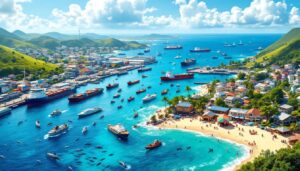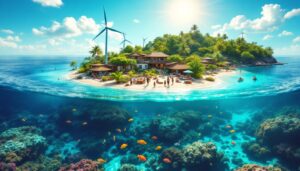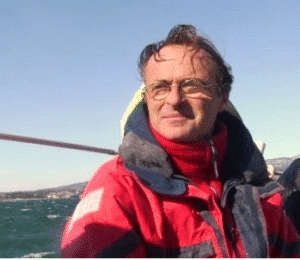Coastal tourism in France is much more than a simple getaway to sandy beaches. It is a true experience that combines breathtaking landscapes, varied water activities, rich cultural heritage and local gastronomy. From the shores of the Côte d’Azur to the cliffs of Normandy, each maritime destination offers a range of unique attractions that attract millions of visitors each year. In this dynamic, it is essential to understand the factors that make up the appeal of coastal tourism, ranging from infrastructure to environmental preservation, including the various experiences offered to vacationers.
Table of Contents
ToggleThe characteristics of coastal tourism in France

THE coastal tourism in France is distinguished by a diversity of activities and unique landscapes. The French coast stretches for more than 5,500 kilometers and offers visitors a multitude of experiences. Whether relaxing on sandy beaches, exploring wild coves or enjoying bustling seaside resorts, the possibilities are endless.
The characteristics of coastal tourism vary depending on the region. On the Mediterranean coast, for example, the sunny climate attracts vacationers almost all year round. Water activities such as sailing, windsurfing and diving are widely popular. In contrast, the Atlantic coast is famous for its surfing beaches, salt marshes and historic lighthouses.
Another crucial aspect of coastal tourism in France is the gastronomy. The coastal regions offer an exceptional culinary wealth, from fresh seafood to local specialties such as bouillabaisse in Provence or oysters from the Arcachon basin. These regions are also renowned for their festivals and cultural events that punctuate the year.
To fully appreciate coastal tourism in France, it is essential to know the infrastructure available. Accommodation options range from seaside campsites to luxury hotels to tourist residences. Transport is also suitable to accommodate visitors, with regional airports, train stations and well-developed bus networks.
Finally, the importance of environmental preservation should not be underestimated. Several local and national initiatives aim to protect marine and coastal ecosystems. Protected areas like Marine Natural Parks help maintain the balance between tourism development and conservation.
To summarize, coastal tourism in France is shaped by its variety of landscapes, its gastronomic richness, its multiple activities and its commitment to the environment. These elements make the French coasts a destination of choice for travelers from all over the world.
The different types of activities offered
THE coastal tourism in France is a real gold mine for lovers of landscape, relaxation and local cultures. France’s magnificent coastlines attract millions of visitors each year with their idyllic beaches, picturesque villages and diverse activities.
Regions like the Côte d’Azur, Brittany and Normandy offer unique experiences, from relaxing on sandy beaches to discovery of cultural heritage rich. These destinations are distinguished by their natural assets and their warm welcome.
Among the essential characteristics of coastal tourism are:
- Well-designed coastal areas to welcome tourists
- A wide variety of housing, ranging from campsites to luxury hotels
- Transport infrastructure making travel easier
- Culinary offers highlighting seafood
The activities offered are a key element in understanding the popularity of coastal tourism in France:
- Scuba diving : Explore the seabed and observe aquatic fauna
- Water sports : Windsurfing, kitesurfing, and jet skiing
- Boat trips : Cruises, sailboat or zodiac trips
- Hiking : Coastal paths offering panoramic views
- Cultural discovery : Visit to museums, lighthouses, and historic sites
The economic impact on regions bordering the sea
THE coastal tourism in France is distinguished by several specific elements that attract millions of visitors each year. From the natural beauty of its landscapes to the diverse water activities, the coastal regions offer a unique experience.
Sandy beaches, cliffs, hidden coves and vibrant resorts are all features that define this tourism segment. The French coastline, stretching over more than 5,800 km, presents an impressive diversity of attractive sites for families, water sports enthusiasts and nature lovers.
Main activities include:
- Swimming
- Surfing
- Sailing
- Scuba diving
Thus, the variety of activities available allows everyone to find what they are looking for, whether it is relaxation or more sporting adventures.
The economic impact on regions bordering the sea is considerable. Coastal tourism generates significant income thanks to accommodation, restaurants, shops, and various tourist services. This sector represents an essential source of income for these regions, also promoting the creation of seasonal jobs and the improvement of local infrastructure.
In 2022, for example, more than 3 billion euros will be spent by French and foreign tourists in these regions. This financial flow not only supports local economies but also preserves natural and cultural heritage.
Additionally, sustainable development is becoming a priority, with efforts to reduce the ecological footprint of coastal tourism. Initiatives include promoting public transportation, implementing waste management measures, and raising visitor awareness about protecting the marine environment.









